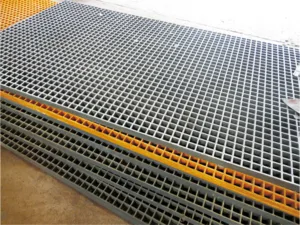In today’s construction and industrial landscape, the choice of materials plays a critical role in the success of any project. When it comes to flooring solutions that offer durability, safety, and versatility, Fiberglass Reinforced Plastic (FRP) grating is a top choice. FRP grating is known for its corrosion resistance, strength, and low maintenance requirements, making it an excellent option for a wide range of applications, from chemical plants to walkways.

fiberglass reinforced plastic grating manufacturer
However, to reap the full benefits of FRP grating, you need to select the right manufacturer. With a multitude of options available, making the best choice can be challenging. This article will guide you through the essential steps to choose the best FRP grating manufacturer for your project.
1. Understanding Your Project Requirements
Before embarking on your search for an FRP grating manufacturer, it’s crucial to have a clear understanding of your project’s requirements. Determine the load-bearing capacity, chemical exposure, and environmental conditions the grating will face. This information will be instrumental in selecting the right manufacturer who can meet your specific needs.
2. Researching Potential Manufacturers
Start by compiling a list of potential FRP grating manufacturers. You can do this by searching online, asking for recommendations from industry peers, or consulting with engineers and experts. Ensure that the manufacturers on your list have experience in providing solutions for projects similar to yours.
3. Evaluating Quality Standards
Quality should be a top priority when choosing an FRP grating manufacturer. Look for manufacturers who adhere to industry standards such as ASTM, ISO, and OSHA regulations. This ensures that the grating meets safety and performance requirements.
4. Assessing Material Composition
Different projects may require FRP grating with varying material compositions. Some may need fire-resistant grating, while others require electrically conductive options. Ensure that the manufacturer can provide the specific material composition your project demands.
5. Analyzing Manufacturing Processes
Understanding how the manufacturer produces their FRP grating is crucial. Inquire about the molding processes, curing techniques, and quality control measures in place to guarantee the consistency and reliability of the product.
6. Checking for Customization Options
Each project has its unique demands. Look for a manufacturer who offers customization options, including size, color, and surface textures. Customized solutions can better meet your project’s requirements.
7. Considering Cost and Budget
Budget constraints are a reality in most projects. Obtain quotes from multiple manufacturers and compare costs while keeping in mind the quality and customization options they offer. Don’t compromise quality for a lower price.
8. Assessing Lead Times and Delivery
Project timelines are often tight. Inquire about the manufacturer’s lead times and their ability to deliver products on schedule. Delays can disrupt your project’s progress.
9. Reviewing Warranty and Support
A reliable manufacturer should provide warranties and ongoing support. Ensure you understand the terms of the warranty and the manufacturer’s commitment to assisting with any issues that may arise.
10. Checking References and Reviews
Research the manufacturer’s reputation by checking references and reading customer reviews. This will give you insights into their track record and customer satisfaction.
11. Eco-Friendly Practices
Sustainability is increasingly important. Inquire about the manufacturer’s environmental practices and whether they use eco-friendly materials and processes.
12. Safety and Compliance
Ensure that the manufacturer prioritizes safety in their products and complies with safety regulations in your industry.
13. Technical Support
Technical expertise can be invaluable during the installation and maintenance of FRP grating. Choose a manufacturer with a dedicated technical support team.
14. Customer Service
Prompt and efficient customer service is essential for addressing inquiries and resolving issues promptly.
15. Conclusion
Choosing the right FRP grating manufacturer is a critical decision that can impact the success of your project. By following these steps and thoroughly evaluating potential manufacturers, you can make an informed choice that ensures your project’s safety, durability, and efficiency.
FAQs
- How long does FRP grating typically last? FRP grating can have a lifespan of 20 to 50 years, depending on factors like usage and environmental conditions.
- Can FRP grating withstand chemical exposure? Yes, FRP grating is highly resistant to a wide range of chemicals, making it ideal for industrial applications.
- Is FRP grating suitable for outdoor use? Absolutely. FRP grating is UV resistant and can withstand outdoor conditions without degradation.
- What maintenance is required for FRP grating? Minimal maintenance is needed, primarily consisting of cleaning to remove dirt and debris.
- Can FRP grating be recycled? Yes, many FRP grating manufacturers offer recycling programs, promoting sustainability in the industry.




























